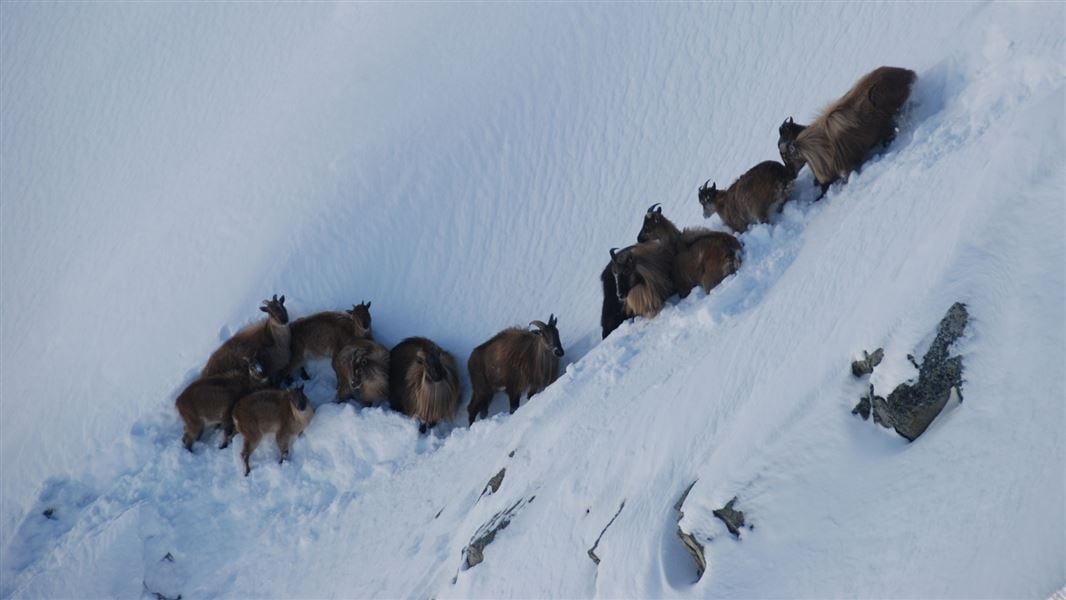Archived content: This media release was accurate on the date of publication.
Date: 01 September 2020
The High Court decision in July allowed DOC to undertake up to 125 hours of aerial control while it consulted stakeholders and then reconsidered its Operational Plan. Since mid-July DOC has completed 118 hours of control.
Operations Director Dr Ben Reddiex says DOC analysed oral and written submissions from 14 stakeholders before making its decision and releasing the finalised Operational Plan.
“With an open mind we have considered a wide range of submissions from groups and individuals representing the interests of recreational and commercial tahr hunters, as well as conservationists, recreationists and statutory bodies.
“While DOC considered each request from stakeholders, the finalised Operational Plan will not be able to completely satisfy all stakeholders, as submitters sought very different outcomes.”
The approved plan enables the recreational and commercial hunting of thousands of trophy bulls and other tahr on and off public conservation land, while still moving DOC towards meeting the goals of the statutory Himalayan Thar Control Plan 1993.
“We are not targeting tahr in popular hunting spots and we’re exploring options to improve hunter access to public conservation land, such as extending the popular tahr ballot period.
“We’re also publishing maps showing the locations of bull tahr we have observed across 425,000ha of public conservation land outside the national parks. We have already recorded more than a thousand observations of bull tahr which DOC has left for hunters.”
Another change to the Operational Plan includes DOC urgently progressing work with Ngāi Tahu, researchers and stakeholders to develop an integrated research and monitoring programme, which will be underway this summer.
Dr Ben Reddiex says key elements of the original Operational Plan will remain in place, with DOC planning to undertake a further 132 hours of aerial control inside the feral range.
“We will shortly recommence targeting all tahr in Aoraki/Mount Cook and Westland Tai Poutini National Parks. In the national parks we are legally required to reduce the number of tahr to the lowest practicable densities and it’s important we protect and preserve these special areas for New Zealand’s native species.”
Before proceeding with control outside the national parks’ management unit, DOC will invite the Game Animal Council to a discussion on the results of 2020/21 control operations to date.
“This is an opportunity to discuss the results so far and consider the Council’s advice for the remaining control effort outside the national parks’ management unit.”
Dr Ben Reddiex says DOC is interested in control, not eradication and DOC will continue to leave bull tahr for hunters across 425,000ha of public conservation land outside of the national parks.
“There are also 133,000 ha of Crown pastoral leases and private land which is where the vast majority of commercial tahr hunting takes place.”
DOC will spend 145 hours targeting all tahr in the exclusion zones and outside the feral range to stop the geographical spread of tahr.
“Since January 2019, we have removed more than 900 tahr from outside the feral range, including 500 at Mt Hutt. Tahr migration is a significant threat to conservation values and once tahr establish and breed in a new place the cost to remove them is substantial.”
The Tahr Control Operational Plan decision document, stakeholder submissions and other documents related to the consultation process and decision have been uploaded to the DOC tahr control operations webpage:
Tahr control operations update and links to supporting to the decision documents
Background information
The Himalayan Thar Control Plan 1993 (HTCP) is a statutory document made under section 5(1)(d) of the Wild Animal Control Act 1977.
DOC’s annual Operational Plan identifies how it will implement the Himalayan Thar Control Plan which sets a maximum population of 10,000 tahr across 706,000 ha of private land, Crown pastoral leases and public conservation land.
Contact
For media enquiries contact:
Email: media@doc.govt.nz
